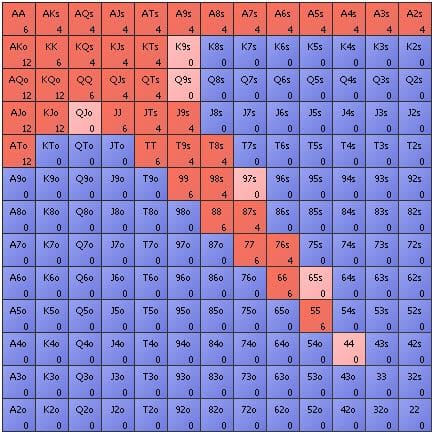
I recently finished reading Matthew Janda’s Applications of No-Limit Hold ‘Emand considered it one of the most helpful poker books I’ve read in some time. On a scale of 1 – 10, I give it a 9.5.
Applications of No-Limit Hold'em teaches theoretical sound poker, and thus the ability to create the bet-sizings and ranges which will beat the better players. The theory in this book is not.
Applications of No-Limit Hold 'em teaches theoretical sound poker, and thus the ability to create the bet-sizings and ranges which will beat the better players. The theory in this book is not. Kijk op voor meer informatie over No-Limit Holdem!
Matt Janda’s Applications of No-Limit Hold ‘em is an exception. Janda’s book is perfect for players with an understanding of poker looking to improve their theoretical game. Jan 08, 2019 Like my book review about “Applications of No-Limit Hold’em” by Matthew Janda. The book is old (for a poker book, as knowledge is often quickly kind of outdated), and was written in the Dark Ages.


Applications is a Two Plus Two book par excellence. It’s dense, it’s thorough, it’s mathematically rigorous, and the only thing keeping it from a perfect score is that the writing and editing are sloppy at best and downright confusing at worst. There are dozens of typos, some as significant as a missing “not” which of course completely changes the meaning of the sentence. The subject matter is complicated, and the prose doesn’t do as much as it could to elucidate it. If anything, it serves to make the material seem even more overwhelming, and I can imagine many bookstore browsers getting intimidated.
If you can get past all that, though, you’ll find the most thorough and practical guide there is to playing unexploitable no-limit hold ’em. There are no toy games here; Janda gets right down to business applying game theory concepts to real no-limit hold ’em situations.
His techniques for estimating optimal pre-flop ranges are ingenious, and it only gets better from there. He emphasizes repeatedly that the goal isn’t to construct perfectly balanced ranges – that’s generally beyond human capabilities and in any event the details matter very little at the margins – but rather to build intuition and to recognize spots where you should be bluffing, value betting, calling, or folding more than you currently are.

Perhaps the most eye-opening conclusion for me was that there are many situations where the optimal strategy likely involves multiple bet sizes. Although Janda doesn’t go into a lot of depth on this, it’s certainly inspired me to investigate these situations for myself.
No Limit Hold'em Rules
That’s not to say that Janda never goes into any depth. One of the highlights of the book are the hand examples at the end, where builds ranges for both players across multiple decision points in a single hand. His wise decision to shift the focus away from how to play a particular hand and towards building range-based strategies is the best illustration I’ve scene of both how one ought to think about poker and also how, specifically, to do that in a given situation.
Applications Of No Limit Hold Em Pdf
This is not a book for the lazy or the close-minded. A quick skimming or surface-level reading won’t do much for you, and unfortunately the prose sometimes gets in the way of understanding already hard-to-grasp concepts. The effort is worth it, though.